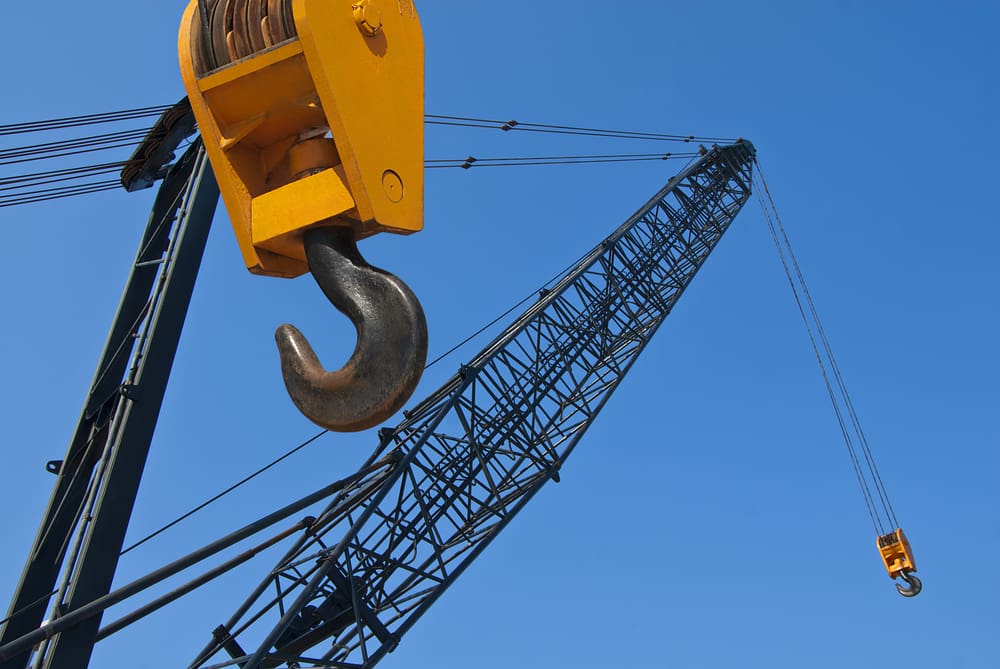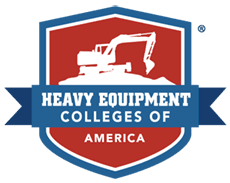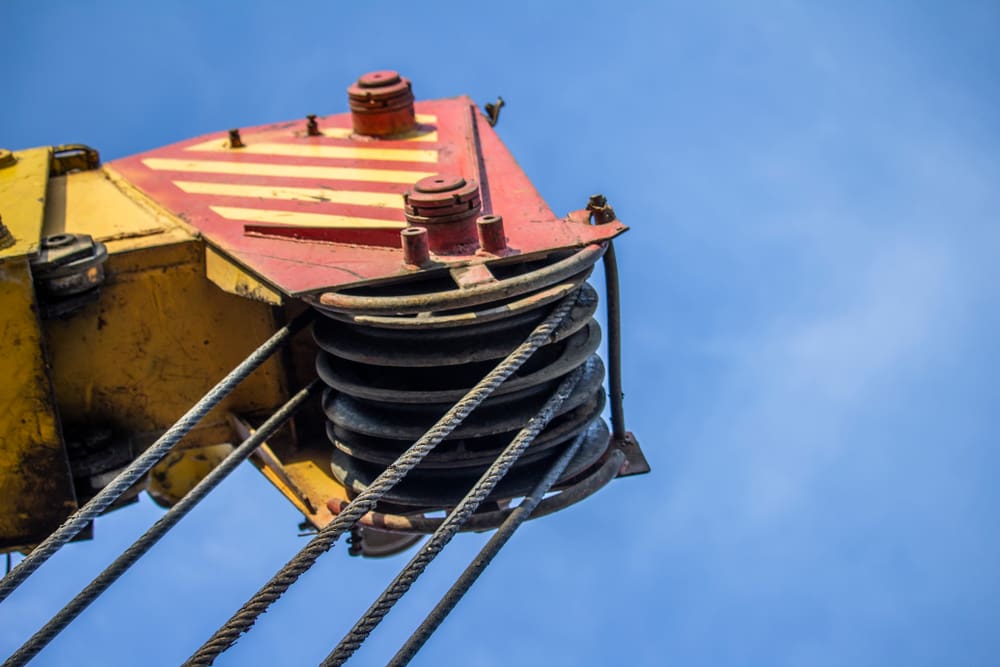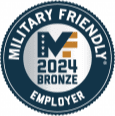Cranes are valuable pieces of equipment that have helped advance the construction industry for centuries. They also pose certain hazards to those who use them, such as two-blocking. Let’s take a look at this potential hazard associated with operating a crane along with practical prevention tips.
Table of Contents
What Is Two-Blocking?
Two-blocking occurs when the load block or overhaul ball attached to a crane collides with the boom nose, auxiliary nose, or boom extension nose. This type of collision is extremely hazardous, as the wire rope suspending the load could break and cause the attached load to fall. Two-blocking can damage crane equipment and injure the operator and other workers in the area. More severe accidents can be fatal.
The good news is most cranes today are equipped with anti-two-blocking warning systems that alert the operator before the load block or overhaul ball comes into contact with the boom nose, auxiliary nose, or boom extension nose. With that said, most older cranes do not have this built-in technology.
When Does Two-Blocking Occur?
Knowing the situations in which two-blocking is more likely to occur helps operators mitigate the risks. Here are several factors that increase the chances of a two-blocking event.
- The load block or overhaul ball is hoisted too high
- The boom is extended without first being hoisted down
- The crane’s anti-two-blocking system is malfunctioning or inoperable
- The operator doesn’t have the training required to safely operate the crane being used

How to Prevent Two-Blocking
Want to keep a two-blocking event from happening on your watch? Check out our top prevention tips below.
- Maintain the crane: Perform routine maintenance checks, and inspect the crane thoroughly before each use.
- Install an anti-two-blocking system: Test the system before each use to ensure proper function and set it to the correct mode. If the system shows any signs of being damaged or defective, inspect it and perform repairs before proceeding with a load or lift.
- Follow safety protocols: Implement safe load and lift control procedures, which include removing obstacles and operating the crane at a steady pace.
- Identify the load block and overhaul ball: Know where the load block and overhaul ball are at all times, and ensure adequate clearance from the boom nose, auxiliary nose, or boom extension nose.
What Is an Anti-Two-Blocking System?
Modern cranes are equipped with anti-two-blocking systems to prevent a two-blocking event from occurring and putting workers in danger. These warning systems have switches that are mounted at the end of the boom nose, auxiliary nose, or boom extension nose. A weight is attached to a chain or cable and hangs from the switches, rotating around a wire rope.
How It Works
When the load block or overhaul ball starts lifting the weight, the switches are activated. This signals the alarm system, which triggers a buzzer and a warning light that lets the operator know a two-blocking event is about to occur. The hoist-up and boom-down functions are disabled to prevent a two-blocking event.
While anti-two-blocking systems help prevent two-blocking incidents, they should always be accompanied by proper crane training, hands-on experience, and the implementation of safety procedures.
Why They’re Needed
Anti-two-blocking systems are important for many reasons. Their main benefits include their ability to:
- Protect operators and other workers from harm, which gives them a greater sense of security
- Enhance productivity and efficiency on job sites
- Ensure load and lift operations are conducted safely, with the load being transported securely
Plus, anti-two-blocking systems are required by OSHA safety standards.
What Does It Mean to Weathervane a Crane?
Just like any other piece of heavy equipment, cranes must be used properly to keep people safe. That includes taking certain precautions when it’s windy outside or a storm is brewing. Let’s go over what it means to weathervane a crane, why it’s important, and the average wind speed guide.
Anti-Two-Blocking Warning Systems
Here’s a breakdown of two popular anti-two-blocking (ATB) systems on today’s market. Both systems prevent equipment damage and protect workers from sustaining crane-induced injuries.
Wireless ATB Systems
If you’re using a telescopic or lattice boom crane and don’t need lifting personnel present during the lift, a wireless ATB system is right for you. These systems are easy to install and expertly designed, containing audio and visual alarms that let the operator know when the crane’s hook reaches its maximum height capacity.
Hardwired ATB Systems
Hardwired ATB systems are ideal for lifts that require lifting personnel and are designed for use on fixed boom cranes because they contain a cable. These systems also activate audio and visual alarms when the hook reaches its maximum height capacity, allowing the operator to prevent the hook from cinching and colliding with other components.
Why Crane Safety Is an Important Aspect of Crane Operator Training Programs
Cranes are powerful pieces of equipment that allow construction crews to accomplish tasks they would otherwise be unable to do. They also pose a significant risk to those who operate them and work in their vicinity if not used properly.
Taking proper precautions will help protect equipment from getting damaged and workers from getting injured. Follow all safety protocols, and have a plan in place for when problems arise. This will help:
- Prevent overloading
- Keep debris from falling
- Eliminate electrical hazards
- Protect workers and any bystanders
- Enhance efficiency
- Minimize slowdowns
- Minimize risk and liability
Become a Certified Crane Operator
Are you ready to start your career as a certified crane operator? Heavy Equipment Colleges of America has the crane training programs you may need to prepare for life on the job. Our accelerated courses will teach you how to perform crane operations safely and effectively through a combination of classroom instruction and hands-on experience.
Don’t wait to pursue the future you want. Start the enrollment process today to see how HEC can get you where you want to go in as little as three weeks.





